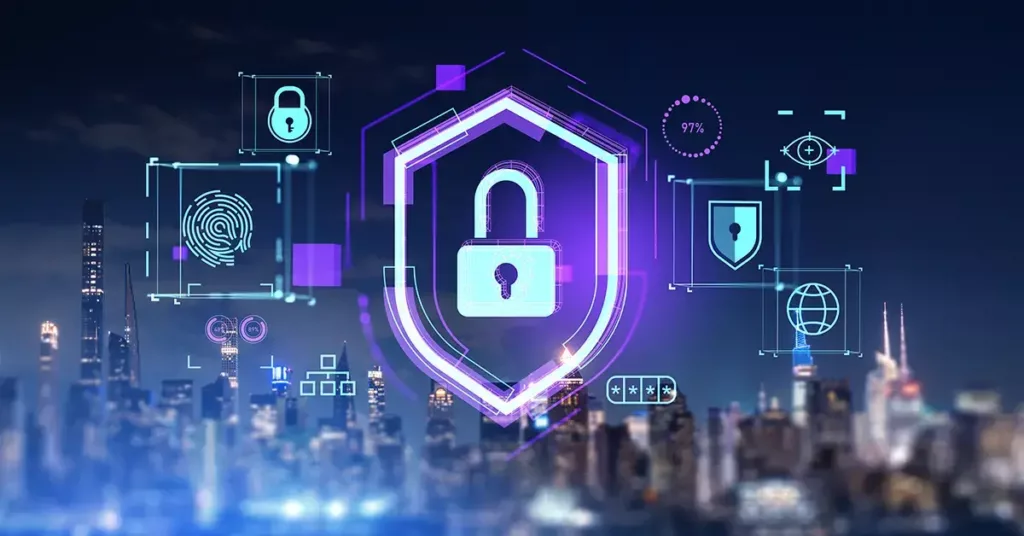Master Every Tech Challenge
The Pokemon fandom is on fire! A Game Freak employee got phishing-ed… which caused a massive content leak from the company. This massive hack exposed the personal information of over 2,600 employees, details about upcoming Pokémon games, and even information about unreleased hardware like the Nintendo Switch.
Have you ever been hacked? If not, it’s not a matter of if but when.
Welcome to Vinova Tech Support. In our decade-long experience, we were sometimes surprised at how many gaping loopholes our clients have with their digital systems. Which is a gold mine for hackers, unfortunately.
In light of the recent Teraleak data breach at Game Freak, it’s crucial to prioritize online security. To protect yourself from falling victim to data breaches or other online threats, implement these 9 essential MFA methods, ranked by our IT talents.
Table of Contents
What Is MFA?

MFA stands for Multi-Factor Authentication. It’s a cyber security measure that requires you to provide multiple forms of identification to access an account. This adds an extra layer of protection beyond just using a password.
Common types of MFA include:
- Something you know: This could be a password or PIN.
- Something you have: This could be a security token, smartphone, or hardware key.
- Something you are: This could be biometrics like fingerprint or facial recognition.
By using MFA, you make it significantly harder for unauthorized individuals to gain access to your accounts, even if they have your password.
9 Most Secured MFA Methods, Ranked!
Multi-factor authentication (MFA) significantly enhances online security by requiring multiple verification forms before granting access to accounts. Here are ten effective MFA methods to consider:
#1: Authenticator Apps
Use apps like Google Authenticator or Microsoft Authenticator, which generate time-sensitive login codes. These codes change every 30 seconds, providing an additional layer of security beyond passwords.
Why should you choose authenticator apps as an MFA method?
- Time-Sensitive Codes: The constantly changing codes make it difficult for hackers to exploit stolen credentials.
- Ease of Use: Authenticator apps are user-friendly and straightforward to set up.
- Broad Compatibility: They work with a wide range of services and websites.
- Offline Functionality: Generate codes without an internet connection for added security.
Examples of Authenticator Apps
- Google Authenticator: A widely used app that generates one-time codes for various services
- Microsoft Authenticator: Offers similar functionality with additional features like password management.
- Authy: Known for its user-friendly interface and support for multiple devices.
- LastPass: A password manager that includes an authenticator feature.
- Duo Mobile: Developed by Cisco, it provides secure access and supports push notifications
#2: SMS-Based Verification
Potentially one of the most used MFA methods, an SMS verification will let you receive a one-time code via SMS after entering your password. While convenient, this method is less secure due to vulnerabilities like SIM swapping and interception.
SMS-Based Verification is used directly by platforms like:
- Facebook: Offers SMS-based two-factor authentication as an option.
- Twitter: Users can set up SMS verification for account security.
- PayPal: Provides SMS codes for secure login.
Why Use SMS-Based Verification?
- Enhanced Security: Adds an extra layer of protection beyond passwords.
- Wide Adoption: A common and recognizable security measure supported by many services.
- Convenience: Easy to set up and use.
- Accessibility: Requires only a basic mobile phone for receiving SMS messages.
Potential Drawbacks:
- Vulnerability to SIM Swapping: Can be less secure than authenticator apps.
- Dependence on Mobile Network: Requires a functioning mobile network to receive codes.
- Potential Delays: SMS delivery can sometimes be delayed.
#3. Email Verification
Used by billion-user platforms like Facebook, Google, and LinkedIn, email verification is a straightforward method that many services offer to ensure that the person accessing the account is indeed you. Similar to SMS, this method sends a one-time code to your registered email address. However, you do need to ensure your email account is secured with MFA as well, as it can be a gateway to other accounts.
Why should you use email verification to authenticate your log-ins?
- Convenience: Most people regularly check their email, making this an easy and familiar method.
- No Additional Devices Needed: Unlike some other verification methods, you don’t need a mobile device or app, just access to your email account.
- Widely Supported: Many websites and services support email verification, making it a versatile option.
But remember:
- Dependence on Email Security: If your email account is not secured with Multi-Factor Authentication (MFA), it can be a weak point, as gaining access to your email can lead to access to other accounts.
- Risk of Phishing: Emails can be intercepted, and there’s always a risk of phishing attacks aimed at stealing your verification codes.
- Potential Delays: Email delivery can sometimes be slow, causing delays in receiving your verification code.
#4: Biometric Authentication
Are you considering setting up biometric authentication for your devices? Utilize fingerprints, facial recognition, or voice recognition as a form of authentication. This method is potentially the most highly secure since biometric data is unique to each individual. This method is gaining popularity and is primarily used for smartphones and computers.
Examples of These Apps
- Apple Face ID: Uses facial recognition for secure access to iPhones and iPads.
- Samsung Fingerprint Scanner: Found in many Samsung devices for quick and secure unlocking.
- Windows Hello: Microsoft’s biometric authentication system for Windows 10, uses facial recognition or fingerprint scanning.
- Google Voice Match: Allows users to unlock their devices and access personal information using voice recognition.
The drawbacks of using Biometric Authentication:
- Privacy Concerns: Collecting and storing biometric data raises privacy issues and requires robust security measures.
- False Positives/Negatives: While rare, biometric systems can occasionally produce false positives or negatives, impacting accessibility.
- Technology Dependence: Requires specific hardware and software, which may not be available on all devices.
- Immutability: Unlike passwords, biometric data can’t be changed if compromised.
#5. Hardware Security Keys
Devices like YubiKey or Google Titan require physical presence for authentication. They connect via USB or NFC and are considered one of the most secure MFA methods, blocking nearly all phishing attempts.
Pros of This Method
- High Security: Physical presence is required for authentication, making it nearly impossible for remote attackers to gain access.
- Phishing Resistance: Extremely effective at blocking phishing attempts, as they don’t rely on codes sent via email or SMS.
- Ease of Use: Once set up, using a hardware key is straightforward and quick, often just a matter of inserting the key and pressing a button.
- Compatibility: Many services and platforms support hardware security keys, including Google, Facebook, and GitHub.
- No Battery or Internet Required: These keys do not require batteries or an internet connection, making them reliable and easy to use anywhere.
Cons of This Method
- Cost: Hardware security keys can be relatively expensive compared to other MFA methods.
- Physical Dependency: Losing the key can result in loss of access, though many services offer backup options or recovery processes.
- Initial Setup: Setting up hardware keys can be more complex compared to simpler methods like SMS or email verification.
- Limited Compatibility: Some older devices or less popular platforms might not support hardware security keys.
The Most Used Hardware Security Keys Include:
- YubiKey: A popular choice for hardware-based authentication, offering a range of products for different needs.
- Google Titan Security Key: Designed by Google, these keys provide strong security for various services.
- SoloKeys: An open-source option that supports FIDO2 and U2F standards, offering flexibility and security.
#6: One-Time Passwords (OTP)
One-time passwords (OTPs) generate temporary, unique passwords for each transaction or login attempt. They provide an additional layer of security by ensuring that the password used for authentication changes every time, reducing the risk of unauthorized access. OTPs can be generated through dedicated apps or sent via SMS/email.
Pros of This Method
- Enhanced Security: OTPs are unique and temporary, making them difficult for attackers to reuse or predict.
- Flexibility: Available through various methods such as apps, SMS, or email, providing multiple options for users.
- Reduced Risk: OTPs reduce the risk of phishing and brute-force attacks, as each password is valid for only one session.
- App-Based Advantages: App-based OTPs (e.g., Google Authenticator, Authy) offer better security by being independent of network vulnerabilities and less susceptible to interception.
#7. Smart Cards and Tokens
Use physical smart cards or tokens that must be presented alongside a password. These devices add an extra layer of security by requiring physical possession for access.
Pros of Using A Smart Card
- High Security: Physical possession is required, significantly reducing the risk of remote attacks.
- Phishing Resistance: Difficult for attackers to bypass as they cannot replicate the physical token.
- Dual Factor Authentication: Combines something you know (password) with something you have (token), enhancing security.
- Wide Adoption: Used in various industries, including banking, healthcare, and corporate environments, for secure access.
Examples of These Devices
- RSA SecurID: Widely used in enterprise environments for secure authentication.
- YubiKey: Besides acting as a hardware security key, it also supports smart card functionality.
- Smart Cards: Used in various industries for secure access to systems and buildings.
- Gemalto Tokens: Provide secure access for banking and other sensitive applications.
#8. Current Location
Using your current location as a multi-factor authentication (MFA) method adds a unique and context-specific layer of security. This method verifies your login attempt by confirming that you are accessing your account from a recognized location, such as your home or office. It’s particularly useful for preventing unauthorized access from unusual locations.
Pros of This Method
- Contextual Security: Adds a layer of authentication based on your physical location, making it harder for unauthorized users to gain access.
- Convenience: Seamlessly integrates into your daily routine, requiring no additional action if you’re in a recognized location.
- Alerts for Unusual Activity: Helps detect and alert you to potential unauthorized access attempts from unexpected locations.
Cons of This Method
- Privacy Concerns: Requires access to your location data, which some users may find intrusive.
- Dependence on Location Services: Requires accurate and available location services on your device, which may not always be reliable.
- Limited Use Cases: May not be suitable for users who frequently travel or access their accounts from various locations.
#9. Pattern
Pattern-based authentication involves creating a specific pattern on a grid, such as a 3×3 or 4×4 grid, to unlock a device or gain access to an account. It’s commonly used on smartphones and provides a balance between convenience and security.
Pros of This Method
- Convenience: Easy to use and remember, making it a popular choice for smartphone users.
- Speed: Quick to enter compared to alphanumeric passwords.
- Memorability: Easier to recall patterns than complex passwords for many users.
- User-Friendly: Intuitive for users of all ages, from kids to seniors.
Cons of This Method
- Security Risks: Can be less secure if the pattern is too simple or if smudge marks on the screen reveal the pattern.
- Limited Complexity: Fewer possible combinations compared to traditional passwords, especially on smaller grids.
- Shoulder Surfing: Patterns can be more easily observed and remembered by someone watching.
Examples of These Apps
- Android Lock Screen: A built-in feature on Android devices that allows users to set a pattern for unlocking their phone.
- Pattern Lock Pro: An app for Android devices that offers advanced pattern lock features.
- Smart AppLock: Provides pattern locking for specific apps to enhance security on mobile devices.

Conclusion
With everything moving online, protecting your digital assets is more crucial than ever. By implementing these strong multi-factor authentication (MFA) methods, you can significantly enhance your security and reduce the risk of unauthorized access.
Protect your online security with expert guidance. Contact Vinova today to discuss your specific needs and explore how our comprehensive IT solutions can help protect your digital assets.